The ancient Mesoamerican civilizations left behind remarkable legacies that continue to captivate and bewilder us today. Among these enigmatic remnants is the Mayan calendar, a fascinating system that not only tracked time but also held profound religious and astronomical significance. Although the Mayan civilization declined centuries ago, their sophisticated understanding of celestial phenomena and their ability to capture it in their calendar system is truly awe-inspiring. In this article, we will delve into the intricacies of the Mayan calendar and explore its role in Mesoamerican culture, the connection to astronomy, the structure of the calendar systems, the methods used to decode it, and the legacy it has left behind in modern interpretations. Prepare to embark on a journey of discovery as we unravel the secrets of the Mayan calendar and unlock the mysteries of the ancient Mayan civilization.
Contents
- The Mayan Calendar
- Role in Mesoamerican Culture
- Astronomy and the Mayan Calendar
- Calendar Systems and Structure
- Decoding the Mayan Calendar
- Legacy and Modern Interpretations
- Conclusion
-
Frequently Asked Questions
- 1. How accurate was the Mayan calendar in tracking time?
- 2. What was the purpose of the Tzolk’in Calendar?
- 3. How did the Mayans track the seasons using their calendar system?
- 4. Did the Mayan calendar predict celestial events?
- 5. How did the Mayan calendar influence Mayan religious practices?
- 6. What materials were used to record the Mayan calendar?
- 7. How did the Mayan calendar influence Mayan social structure?
- 8. What is the significance of the Calendar Round in Mayan culture?
- 9. Are there any remaining Mayan calendars in existence today?
- 10. How has the Mayan calendar influenced modern interpretations?
- References
-
Frequently Asked Questions
- 1. How did the Mayans use the calendar?
- 2. What is the significance of the Mayan calendar in Mesoamerican civilizations?
- 3. How did the Mayan calendar contribute to religious practices?
- 4. What astronomical knowledge did the Mayans possess?
- 5. How did the Mayans track cycles using their calendar?
- 6. What is the Long Count calendar?
- 7. How did the Mayans represent dates on their calendar?
- 8. What is the legacy of the Mayan calendar in modern times?
- 9. Is the Mayan calendar accurate in predicting celestial events?
- 10. How does the Mayan calendar differ from the modern Gregorian calendar?
- References
- Read More
The Mayan Calendar
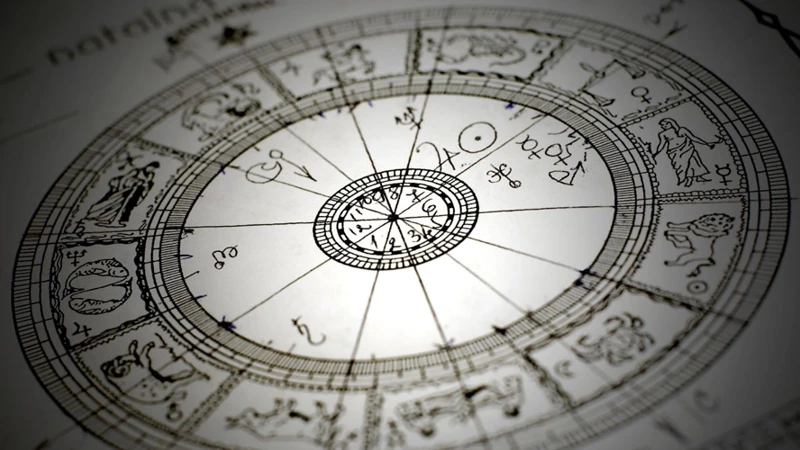
The Mayan calendar is a testament to the remarkable intelligence and ingenuity of the ancient Mesoamerican civilizations. It was not just a simple tool for tracking time; it was a complex system that encompassed various calendar systems and held great significance in Mayan culture. The Mayan calendar consisted of three main calendars: the Long Count Calendar, the Tzolk’in Calendar, and the Haab Calendar. The Long Count Calendar was the most precise and was used to track longer periods of time. It measured time in base-20 units, allowing for the calculation of dates that stretched thousands of years into the past and future. The Tzolk’in Calendar, on the other hand, was a 260-day sacred calendar that played a vital role in the religious and spiritual practices of the Mayans. It was based on the combination of thirteen numbers and twenty day names, resulting in a unique day count system. The Haab Calendar, also known as the vague year, was a solar calendar that consisted of 365 days divided into eighteen months of twenty days each, with a five-day “nameless” period at the end. These calendars worked in harmony and intersected at various intervals, creating a cyclical pattern in which specific days would align once every 52 years, known as the Calendar Round. This synchronized cycle was of great importance to the Mayans as it marked significant religious and ceremonial events. The Mayan calendar system, with its different calendars and intricate calculations, allowed the ancient civilization to organize their days, weeks, months, and years with precision and divine understanding. Today, the Mayan calendar continues to fascinate researchers, historians, and astronomers, offering invaluable insights into the cultural and scientific achievements of the Mayan civilization.
Role in Mesoamerican Culture

The Mayan calendar played a pivotal role in the rich tapestry of Mesoamerican culture. It was deeply intertwined with religious beliefs, timekeeping, and the performance of rituals. The Mayans viewed time as a cyclical concept, and the calendar system provided a framework for understanding and navigating these cycles. One of the key aspects of the calendar’s role in Mesoamerican culture was its religious significance. The Mayans believed that the movements of celestial bodies influenced human lives and events on Earth. They used the calendar to determine auspicious dates for important ceremonies, such as the dedication of temples, the coronation of rulers, and agricultural rituals. The calendar also guided religious festivals and ceremonies, allowing the Mayans to connect with their deities and seek their blessings. Additionally, the calendar had practical applications in everyday life. It helped in agricultural planning, as the Mayans relied heavily on farming for sustenance. By tracking the cycles of the seasons and celestial events, they could determine the best times for planting, harvesting, and performing other agricultural tasks. The Mayan calendar system also served as a means of social organization and governance. Rulers and priests held the responsibility of calculating and interpreting the calendar, solidifying their roles as spiritual and political authorities. The calendar influenced the daily lives of the Mayans, guiding them in their religious practices, agricultural pursuits, and social interactions. Its presence was deeply woven into the fabric of Mesoamerican society, shaping their culture and beliefs for centuries.
1. Religious Significance
The Mayan calendar held immense religious significance in ancient Mesoamerican culture. It was not merely a tool for timekeeping but a sacred instrument deeply intertwined with the Mayan belief system. The Mayans saw time as cyclical, with each day carrying unique spiritual energy and power. The Tzolk’in Calendar, with its 260-day cycle, played a central role in Mayan religious rituals and ceremonies. Each day in the Tzolk’in Calendar had its own name and meaning, representing different deities and forces of nature. These days were believed to influence human fate and were consulted for guidance and divination. The Mayans believed that by aligning their actions with the energy of specific days, they could appease the gods, ensure agricultural success, and bring prosperity to their communities. Additionally, the Long Count Calendar served as a cosmic timetable that tracked the movements of celestial bodies and marked significant celestial events. These celestial occurrences were believed to have direct connections to the divine realm and were regarded as essential for maintaining the balance between the gods and the earthly realm. The religious significance of the Mayan calendar extended beyond the temporal realm into a spiritual domain where the actions of the present could influence the forces that governed the universe. It was a tool that connected the Mayans with their gods and allowed them to navigate the spiritual realm with reverence and purpose. The complexity and intricacies of the Mayan calendar system provide a glimpse into the rich religious beliefs and practices of this ancient civilization. To fully grasp the depth of their devotion, we must examine the interplay between the Mayan calendar, their rituals, and their belief in the divine forces that shaped their world.
2. Timekeeping and Rituals
Timekeeping and rituals played a crucial role in the Mayan culture, intertwined with the intricate workings of their calendar system. The Mayan calendar not only provided a means to measure time, but it also guided the Mayans in their religious and ceremonial practices. The Tzolk’in Calendar, with its 260-day cycle, was particularly significant in this regard. Each day in the Tzolk’in calendar was associated with a specific deity or energy, and the Mayans believed that these energies influenced various aspects of their lives. For instance, certain days were deemed auspicious for carrying out specific activities, such as agriculture, hunting, or warfare. The Mayans would consult the calendar to determine the most favorable days for important events, such as marriages, royal ceremonies, or religious festivals. The calendar also played a role in divination and prophecy. Mayan priests would conduct rituals and ceremonies, seeking guidance and interpreting the calendar’s messages. The Long Count Calendar, with its ability to track longer periods of time, allowed the Mayans to plan for significant celestial events, such as eclipses or solstices, which were believed to hold great spiritual power. These events were marked by elaborate ceremonies and offerings to appease the gods and ensure the prosperity and well-being of their society. Timekeeping and rituals were deeply intertwined in Mayan culture, with the calendar serving as the guiding force for their spiritual and ceremonial practices. It was through this connection that the Mayans sought to maintain harmony with the gods and the universe, ensuring the continuation of their civilization’s prosperity and spiritual well-being.
Astronomy and the Mayan Calendar
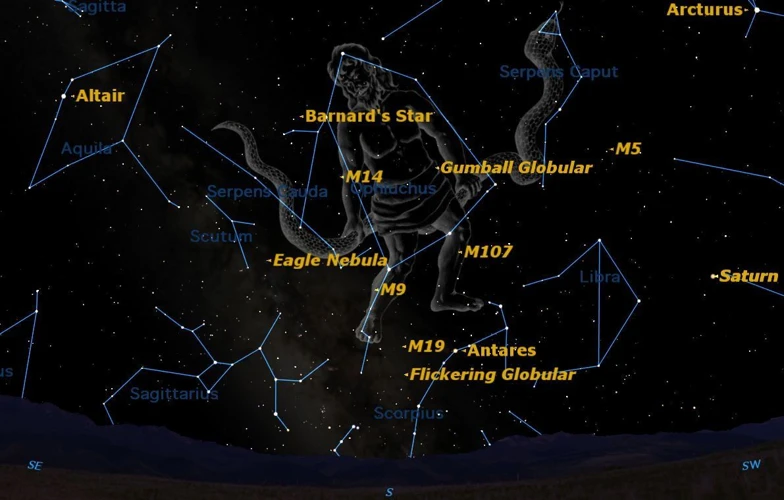
Astronomy played a crucial role in the development and understanding of the Mayan calendar. The Mayans were meticulous observers of celestial events and had an advanced knowledge of astronomy for their time. They recognized the significance of the sun, moon, planets, and stars in their calendar system and incorporated their movements into their calculations. The alignment of the sun and moon was of particular importance to the Mayans, as it impacted agricultural practices, religious ceremonies, and cultural events. The Mayan calendar was designed to accurately track solar and lunar alignments, allowing them to predict eclipses, solstices, equinoxes, and other celestial phenomena. The Long Count Calendar, with its long cycles, provided the means for recording and predicting astronomical events that occurred over thousands of years. The precision and accuracy of the Mayan calendar in relation to astronomical events reflect the deep understanding and reverence the Mayans had for the celestial world. This connection between astronomy and the Mayan calendar highlights the Mayans’ profound relationship with the cosmos and their ability to intertwine their spiritual beliefs with the physical movements of the celestial bodies. To this day, researchers continue to study the astronomical knowledge embedded within the Mayan calendar, fostering a greater appreciation for the scientific advancements achieved by this ancient civilization.
1. Solar and Lunar Alignments
Solar and lunar alignments held great importance in the Mayan calendar system, serving as key elements in understanding celestial events and predicting significant astronomical occurrences. The Mayans were adept astronomers, carefully observing the movements of the sun, moon, and stars. They recognized that certain alignments and positions of celestial bodies corresponded to significant events on Earth. The Mayan calendar allowed them to track these alignments and utilize them for various purposes. For instance, solar alignments played a crucial role in determining the timing of agricultural activities. By noting the position of the sun in the sky, the Mayans could identify the optimal time for planting and harvesting crops. Solar alignments were directly related to religious rituals and ceremonies. The Mayans believed that solar eclipses, which occur when the moon aligns perfectly with the sun, were divine occurrences. These celestial events were seen as messages or omens from the gods and often influenced important decisions made by Mayan leaders. Lunar alignments were equally significant in the Mayan calendar. The Mayans observed the cycle of the moon and identified specific alignments that were associated with important religious festivals and rituals. The lunar calendar helped them determine the timing of events like religious ceremonies, sacrifices, and the honoring of deities. By carefully tracking solar and lunar alignments, the Mayans were able to create a calendar system that not only measured time, but also provided a deeper understanding of the celestial forces that governed their lives. Today, these alignments continue to fascinate astronomers and researchers, shedding light on the advanced astronomical knowledge of the ancient Mayan civilization. (Source: “Ophiuchus Personalities and Their Impact on Various Fields“)
2. Tracking Cycles and Predicting Celestial Events
Tracking cycles and predicting celestial events was a crucial aspect of the Mayan calendar system. The Mayans had a deep understanding of astronomical patterns and were able to accurately predict celestial events such as eclipses, equinoxes, and solstices. They carefully observed the movements of the sun, moon, planets, and stars to determine the patterns and cycles that governed the celestial realm. By aligning their calendars with these celestial events, the Mayans were able to synchronize their religious and agricultural practices with the rhythms of the cosmos. The Long Count Calendar, with its ability to track time over long periods, played a significant role in predicting future alignments of celestial bodies. Through careful calculations, the Mayans could anticipate when important celestial events would occur, allowing them to plan religious ceremonies and agricultural activities accordingly. The ability to accurately predict celestial events not only demonstrated the Mayans’ advanced knowledge of astronomy but also contributed to their religious beliefs and practices. These predictions were of great importance to them, as they believed that celestial events held spiritual and symbolic significance. By understanding the cyclical patterns of the celestial bodies, the Mayans believed they could interpret the messages and omens communicated by the gods. This connection between the celestial realm and everyday life was deeply ingrained in Mayan culture and shaped their religious rituals and beliefs. The ability to track cycles and predict celestial events was a remarkable achievement of the Mayans, further highlighting the profound sophistication and ingenuity of their civilization.
Calendar Systems and Structure
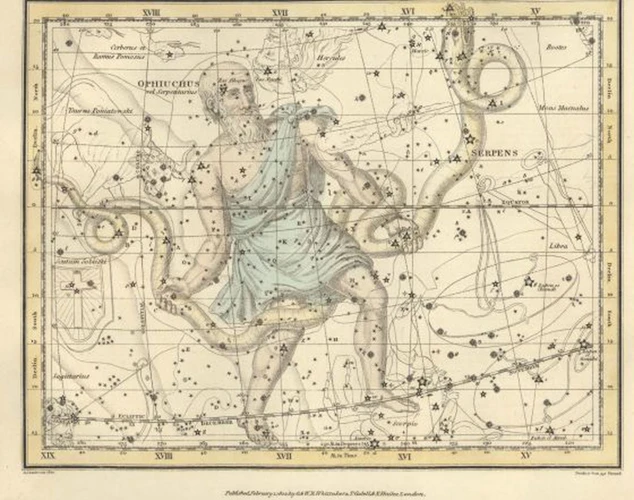
The Mayan calendar systems were complex and meticulously structured, reflecting the remarkable astronomical knowledge and cultural importance of timekeeping for the ancient Mesoamerican civilizations. The Long Count Calendar, the Tzolk’in Calendar, and the Haab Calendar each had their unique purpose and structure. The Long Count Calendar was the most precise and served as a linear measurement of time, tracking the number of days that had passed since a mythical creation date. It consisted of five hierarchical units: the kin (day), uinal (20 days), tun (360 days), katun (7,200 days), and baktun (144,000 days). This base-20 system allowed the Mayans to calculate dates that spanned thousands of years into the past and future.
The Tzolk’in Calendar, with its cyclical nature, was closely tied to religious and ceremonial practices. It consisted of a combination of thirteen numbers and twenty day names, resulting in 260 unique days in total. This sacred calendar played a significant role in Mayan spirituality and was believed to possess powerful energy. Each day had its own symbolic meaning and was associated with specific rituals and activities. The combination of the Tzolk’in day and the Long Count date provided a more precise way of recording time.
The Haab Calendar, also known as the vague year, was a solar calendar consisting of 365 days divided into eighteen months of twenty days each, with an additional period of five “nameless” days at the end. The Haab Calendar was more closely aligned with the solar year and the agricultural cycles, serving as a guide for farming practices and seasonal events.
These calendar systems worked in harmony and intersected at various intervals. For instance, the Tzolk’in Calendar completed a cycle of 260 days at the same time it aligned with a specific day in the Haab Calendar. This cycle, known as the Calendar Round, lasted 52 years and held great significance in Mayan culture, marking important religious and ceremonial events.
The structure of the Mayan calendar systems allowed the ancient Mayans to accurately track time, calculate astronomical events, plan religious ceremonies, and organize their society. The precision and complexity of these calendar systems showcase the advanced understanding the Mayans had of astronomy and mathematics. Today, the Mayan calendar serves as a testament to the ingenuity and cultural richness of the ancient Mayan civilization.
1. Long Count Calendar
The Long Count Calendar was a vital component of the Mayan calendar system. It was a complex and precise method used by the Mayans to track time over long periods, spanning thousands of years. This calendar was based on a base-20 numerical system, known as the vigesimal system, which allowed for the calculation of dates far into the future and the past. The Long Count Calendar started at a mythical date known as the “Creation Date” or “Era Base,” which was believed to be the starting point of the current world cycle. This date was recorded as 13.0.0.0.0 in the Long Count notation and corresponded to August 11, 3114 BCE in the Gregorian calendar. The Long Count Calendar consisted of five units of time: the b’ak’tun, k’atun, tun, winal, and k’in, each representing a different order of magnitude. The b’ak’tun, being the largest unit, was equivalent to 144,000 days or approximately 394.26 years. The other units of time followed a descending order, with the k’atun being 7,200 days, the tun being 360 days, the winal being 20 days, and the k’in being one day. It is fascinating to consider that the Mayans were able to develop such a sophisticated system for measuring time, allowing them to record and predict historical events, cosmic cycles, and celestial phenomena. The Long Count Calendar remains an intriguing testament to the Mayan civilization’s advanced mathematical and astronomical knowledge, and its legacy continues to be studied and explored in the field of archaeoastronomy today.
2. Tzolk’in and Haab Calendars
The Tzolk’in and Haab calendars are two essential components of the Mayan calendar system, each with its own unique characteristics and significance. The Tzolk’in calendar, also referred to as the Sacred Round, was a 260-day calendar that played a crucial role in Mayan religious and ritualistic practices. It was comprised of a combination of thirteen numbers and twenty day names, resulting in a cycle of 260 unique days. Each day within the Tzolk’in calendar had a specific meaning and was associated with various deities and natural elements. This calendar was believed to govern human destinies and provide guidance for important decisions and actions. The Haab calendar, also known as the civil year, was a solar calendar consisting of 365 days divided into eighteen months of twenty days each. Additionally, the Haab calendar included a five-day period known as the Wayeb, which was considered a time of uncertainty and introspection. Unlike the Tzolk’in calendar, which had a cyclical pattern, the Haab calendar was not cyclic but followed a linear progression. The combination of the Tzolk’in and Haab calendars created a larger cycle known as the Calendar Round, which lasted for a span of 52 years. This cycle was of immense importance in Mayan culture as it marked significant religious ceremonies and agricultural events. Together, the Tzolk’in and Haab calendars provided the ancient Mayans with a comprehensive system for tracking time, guiding their religious practices, and organizing their day-to-day lives. The complexity and precision of these calendars showcase the immense knowledge and sophistication of the Mayan civilization. Today, the Tzolk’in and Haab calendars continue to be studied and admired for their intricate design and their ability to align with celestial events, offering a fascinating glimpse into the ancient Mayan culture and their relationship with time and nature.
Decoding the Mayan Calendar
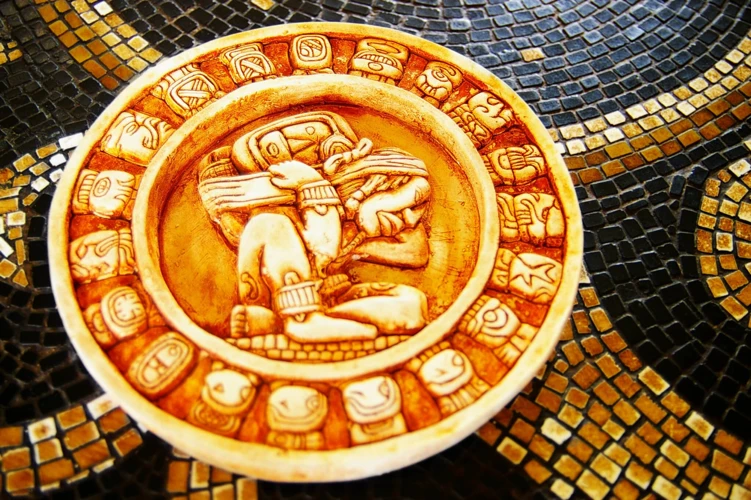
Decoding the Mayan calendar and understanding its intricate system is a challenge that has fascinated scholars for centuries. The Mayans recorded their calendar using hieroglyphs and glyphs, which were intricate symbols representing various concepts and objects. These inscriptions were found on stelae and monumental structures throughout Mayan cities. The process of deciphering Mayan hieroglyphs was a complex task that required the collaboration of a diverse range of experts, including linguists, archaeologists, and epigraphers. One of the breakthroughs in understanding the Mayan calendar came with the discovery of the “Grove Calendar Stone,” a massive stone monument that has inscriptions relating to the calendar system. It provided key clues and allowed researchers to decode the Mayan hieroglyphs more accurately. Today, we have a much better understanding of the Mayan calendar thanks to the persistent efforts of scholars and the advancement of archaeological techniques. However, there are still aspects of the Mayan calendar that remain a mystery, leaving room for ongoing research and exploration. The decoding of the Mayan calendar has shed light on the cultural, religious, and astronomical significance of this ancient civilization, allowing us to gain deeper insights into their way of life.
1. Hieroglyphs and Glyphs
Hieroglyphs and glyphs were essential components in decoding the Mayan calendar. These intricate symbols held deep meaning and were used to represent words, concepts, and dates. The Mayans used hieroglyphs, which are complex characters that resemble pictorial images, to convey their written language. These hieroglyphs were carved into stone monuments, known as stelae, and other structures. Each hieroglyph represented a particular word or idea, and they were used in combination to form sentences and communicate narratives. Deciphering these hieroglyphs was a significant breakthrough in understanding the Mayan calendar and deciphering the rich cultural history of the civilization. Glyphs, on the other hand, were a specific type of hieroglyph used in the context of the calendar system. The glyphs represented the different components of the calendar, such as days, months, and years. They were intricately designed and often appeared in a series of columns or rows within a larger text. These glyphs provided crucial information for tracking time, correlating celestial events, and predicting future occurrences. The process of interpreting these hieroglyphs and glyphs was complex and required meticulous study and analysis. Today, researchers have made significant progress in deciphering the Mayan hieroglyphic script, thanks to the efforts of experts in epigraphy and linguistics. Their work has shed light on the vast knowledge and intellectual achievements of the ancient Mayan civilization and has allowed us to gain a deeper understanding of the Mayan calendar. If you want to learn more about the fascinating symbols and creatures depicted in Mayan hieroglyphs, you can explore the intriguing world of ancient mythologies by clicking on this link.
2. Stela and Monumental Inscriptions
Stela and monumental inscriptions played a crucial role in decoding the intricacies of the Mayan calendar system. These stone monuments, often adorned with intricate carvings and hieroglyphs, served as important historical markers and sources of information about the Mayan civilization. Stelae were large, tall stone slabs that were erected in public spaces, such as plazas and temples, and were inscribed with hieroglyphic texts. These texts contained valuable information about historical events, rulers, astronomical events, and the calendar. The intricate carvings on the stelae depicted rulers, gods, and other significant figures, further enhancing the information conveyed. Monumental inscriptions, not limited to stelae, were also found on other structures such as altars, buildings, and tombs. These inscriptions provided additional context and understanding of the Mayan calendar system. The glyphs and hieroglyphs inscribed on these monuments were deciphered through the efforts of dedicated scholars, such as the groundbreaking work of the Mayanist David Stuart. Through their decipherment, researchers gained insights into the Mayan calendar, including the correlation between the calendar and celestial events, the historical events that were recorded, and the religious and cultural significance of certain dates. Today, these stela and monumental inscriptions serve as a rich source of knowledge, allowing us to piece together the puzzle of the Mayan calendar and understand its complex structure and significance in the ancient Mesoamerican civilizations.
Legacy and Modern Interpretations
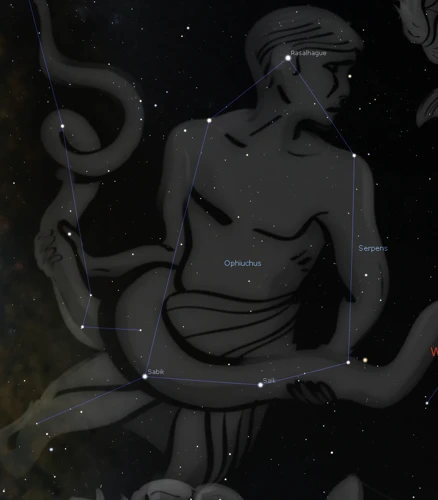
The legacy of the Mayan calendar extends far beyond the collapse of the ancient civilization. Today, the Mayan culture and its calendar system continue to have a powerful impact on various aspects of modern society. One notable aspect is the Mayan civilization’s continued presence in the Maya communities that still exist in Mexico, Guatemala, and Belize. These communities have preserved and passed down their ancestral knowledge, keeping the traditions, rituals, and concepts embedded in the Mayan calendar alive. Additionally, the Mayan calendar has gained popularity and sparked widespread interest among researchers, archaeologists, and enthusiasts. The decoding of hieroglyphs and glyphs found in stelae and monumental inscriptions has shed light on the intricate workings of the Mayan calendar and its deep connection to astronomical observations. However, it is important to note that there are also misconceptions surrounding the Mayan calendar, particularly related to the predicted end of the world in 2012. Modern interpretations of the Mayan calendar now emphasize its cyclical nature rather than an apocalyptic event. Scholars have continued to explore the astronomical significance of the Mayan calendar and its alignments with celestial events such as solstices and equinoxes. They have also drawn connections between the Mayan calendar and other ancient calendars around the world, further highlighting its global significance. As our understanding of the Mayan calendar deepens, its influence continues to permeate various fields including archaeology, anthropology, and even popular culture. The Mayan calendar’s enduring legacy serves as a testament to the remarkable achievements of the ancient Mesoamerican civilization and leaves us with a profound appreciation for their advanced understanding of time and the cosmos.
1. Maya Civilization Today
The Maya civilization, while ancient, still has a vibrant presence in today’s world. Descendants of the Mayans continue to inhabit the regions of Mexico, Guatemala, Belize, Honduras, and El Salvador, where their ancestors once thrived. These modern Maya communities, often referred to as Maya people, have managed to preserve and uphold their cultural heritage despite years of colonization and external influences. Today, the Maya civilization is not just a part of history but a living testament to the resilience and endurance of an ancient civilization. Maya people proudly maintain and pass down their traditional practices, customs, and knowledge to younger generations. They uphold their indigenous languages and engage in various forms of art, including pottery, weaving, and carving, which are rooted in ancient Mayan traditions. The Maya people also continue to celebrate their religious ceremonies and navigate their lives according to the teachings and beliefs of their ancestors. While the contemporary Maya civilization has undoubtedly evolved over time, its foundations remain deeply rooted in the rich cultural legacy of their forebearers, demonstrating the enduring influence and perseverance of this remarkable civilization. The Maya civilization today offers a bridge between the past and the present, allowing us to appreciate the profound impact this ancient civilization continues to have on the world around us.
2. Popularity and Misconceptions
Popularity and misconceptions surrounding the Mayan calendar have grown significantly in recent years, often fueled by sensationalized interpretations and media portrayals. The year 2012, in particular, sparked widespread interest and speculation due to a misinterpretation of the Mayan calendar. Some believed that the calendar predicted the end of the world on December 21, 2012, leading to a surge of doomsday predictions and apocalyptic theories. However, this interpretation is far from accurate. The Mayan calendar, like any other calendar, simply marked the end of one cycle and the beginning of a new one. It did not prophesize the end of the world. Despite the misconceptions, the Mayan calendar remains an object of fascination and study. Its cultural and scientific significance continues to be acknowledged, and it serves as a testament to the advanced understanding of timekeeping and astronomy in ancient Mesoamerican civilizations. By debunking misconceptions and exploring the true importance of the Mayan calendar, we can appreciate the remarkable achievements of the Mayan civilization and the enduring legacy they have left behind.
Conclusion
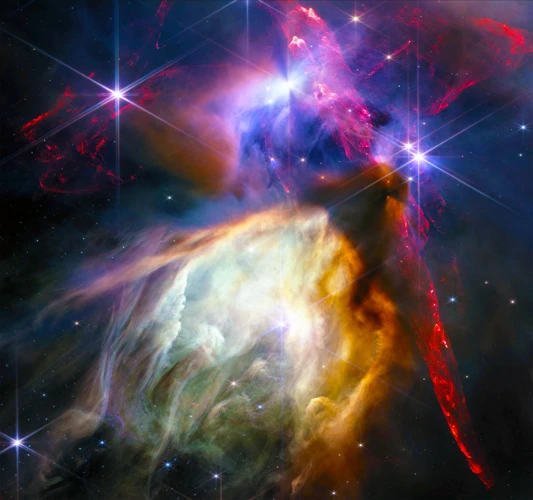
In conclusion, the significance of the Mayan calendar in ancient Mesoamerican civilizations cannot be overstated. This intricate calendrical system played a pivotal role in various aspects of Mayan culture, including religion, astronomy, and timekeeping. The Mayans’ deep understanding of celestial phenomena allowed them to track solar and lunar alignments, predict celestial events, and establish a harmonious connection between their earthly existence and the heavens above. Through their calendar systems, such as the Long Count Calendar, Tzolk’in Calendar, and Haab Calendar, the Mayans organized their lives and rituals with precision and imbued a spiritual meaning into the passing of time. The legacy of the Mayan calendar continues to inspire awe and fascination in modern times, as we strive to decipher their hieroglyphs and monumental inscriptions to gain further insight into their advanced civilization and cultural practices. The Mayan civilization may have faded into history, but their calendar remains a testament to their intellectual achievements and the complexity of their ancient society. As we delve deeper into the study of the Mayan calendar, we uncover not only the scientific and mathematical prowess of the Mayans but also their profound connection with the natural world and the celestial realms. The Mayan calendar stands as a testament to the lasting impact and importance of ancient civilizations in shaping our understanding of human history and culture.
Frequently Asked Questions
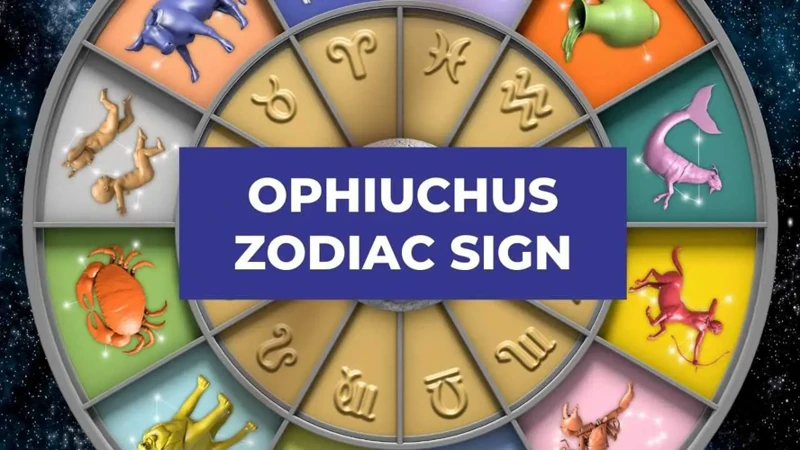
1. How accurate was the Mayan calendar in tracking time?
The Mayan calendar was remarkably accurate in tracking time. The Long Count Calendar, specifically, was able to calculate dates thousands of years into the past and future with great precision.
2. What was the purpose of the Tzolk’in Calendar?
The Tzolk’in Calendar held deep religious and spiritual significance for the Mayans. It was used to determine auspicious days for ceremonies, rituals, and important events.
3. How did the Mayans track the seasons using their calendar system?
The Mayans used the Haab Calendar, a solar calendar, to track the seasons. It consisted of 365 days divided into eighteen months of twenty days, aligning closely with the solar year.
4. Did the Mayan calendar predict celestial events?
Yes, the Mayan calendar system had the capability to predict celestial events such as eclipses and the movement of planets. The Mayans had a deep understanding of astronomy and integrated it into their calendar.
5. How did the Mayan calendar influence Mayan religious practices?
The Mayan calendar played a central role in Mayan religious practices. The alignment of specific dates and cycles in the calendar were believed to have spiritual significance and were closely tied to rituals, ceremonies, and divination.
6. What materials were used to record the Mayan calendar?
The Mayans utilized various materials to record their calendar, including stone stelae, monumental inscriptions, and codices made of bark paper. These mediums preserved the intricate hieroglyphs and glyphs associated with the calendar system.
The Mayan calendar system played a crucial role in the social structure of Mayan society. It helped determine the roles and responsibilities of individuals within the community, guided agricultural activities, and regulated important communal events.
8. What is the significance of the Calendar Round in Mayan culture?
The Calendar Round was a 52-year cycle that marked significant events in Mayan culture. It symbolized the completion of a cosmic cycle and was celebrated with elaborate rituals and ceremonies.
9. Are there any remaining Mayan calendars in existence today?
While the original Mayan calendars have been lost or destroyed, there are surviving inscriptions, codices, and artifacts that provide valuable insights into the Mayan calendar system.
10. How has the Mayan calendar influenced modern interpretations?
The Mayan calendar has captured the fascination of people around the world, giving rise to numerous modern interpretations and theories. Some have even erroneously associated the Mayan calendar with apocalyptic predictions, contributing to misconceptions about its true significance.
References
Frequently Asked Questions

1. How did the Mayans use the calendar?
The Mayans used the calendar for various purposes, including religious ceremonies, agricultural planning, and tracking celestial events. It played a crucial role in their cultural and social activities.
2. What is the significance of the Mayan calendar in Mesoamerican civilizations?
The Mayan calendar held immense significance in Mesoamerican civilizations as it provided a framework for organizing time and understanding their place in the cosmos. It reflected their deep connection to nature and the cycles of life, allowing them to navigate their world with precision.
3. How did the Mayan calendar contribute to religious practices?
The Mayan calendar played a vital role in religious practices, shaping their beliefs and rituals. It assisted in scheduling ceremonies, festivals, and sacrifices based on specific dates and alignments with celestial events, such as solstices and equinoxes.
4. What astronomical knowledge did the Mayans possess?
The Mayans had an impressive understanding of astronomy, which they integrated into their calendar system. They accurately tracked the movements of the Sun, Moon, planets, and stars, allowing them to predict eclipses and other celestial phenomena.
5. How did the Mayans track cycles using their calendar?
The Mayans incorporated different calendar systems to track cycles of time, such as the Long Count calendar, Tzolk’in, and Haab calendars. These interlocking calendars helped them monitor agricultural cycles, celestial events, and historical time periods.
6. What is the Long Count calendar?
The Long Count calendar was a complex system used by the Mayans to measure long stretches of time. It provided a way to record historical events, dates of birth, as well as forecast future events, like the end of a baktun, which corresponds to approximately 394 years.
7. How did the Mayans represent dates on their calendar?
The Mayans used hieroglyphs and glyphs to represent specific dates on their calendar. These intricate symbols were inscribed on stelae and monumental structures, providing valuable clues for deciphering their calendar system and understanding their historical records.
8. What is the legacy of the Mayan calendar in modern times?
The Mayan calendar’s legacy continues to thrive in the present day. Maya civilization, with its rich traditions and cultural heritage, is still alive, and their calendar holds significance for current-day Maya communities. However, it is important to distinguish between the genuine calendar interpretations and the misconceptions surrounding the so-called “Mayan prophecies” associated with the end of the world in 2012.
9. Is the Mayan calendar accurate in predicting celestial events?
The Mayan calendar demonstrates a remarkable level of accuracy in predicting celestial events. Their intricate knowledge of astronomical patterns allowed them to forecast eclipses, solstices, and equinoxes with impressive precision, further emphasizing their advanced understanding of the cosmos.
10. How does the Mayan calendar differ from the modern Gregorian calendar?
The Mayan calendar differs from the modern Gregorian calendar in several ways. While the Gregorian calendar follows a linear concept of time, the Mayan calendar combines cyclical and historical aspects. Additionally, the Mayan calendar comprises multiple interlocking cycles, whereas the Gregorian calendar primarily follows a 365-day solar cycle.






